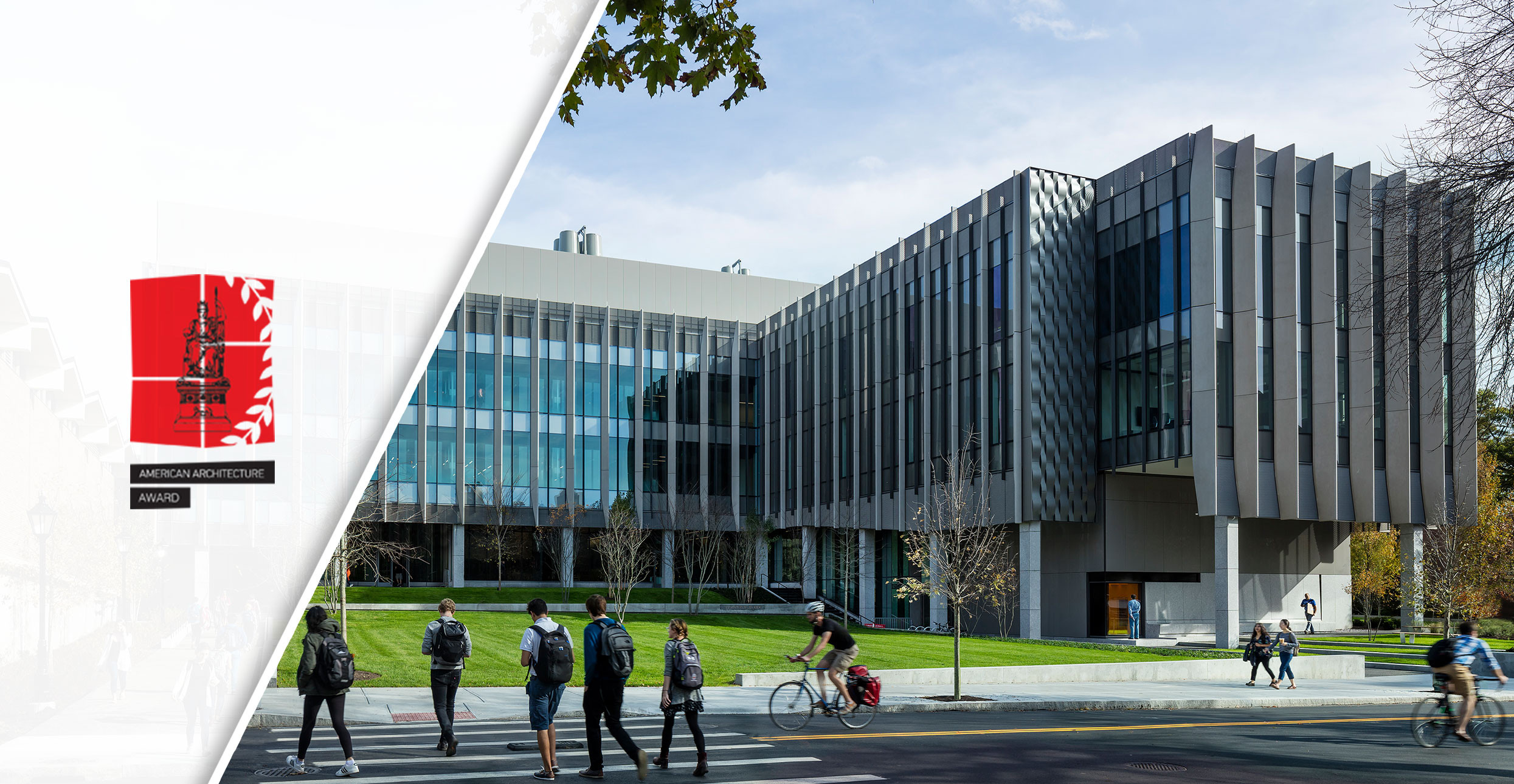The Engineering Research Center (ERC) at Brown University has been honored with a 2020 American Architecture Award. Designed by KieranTimberlake, the ERC is among the first institutional labs in the nation to be delivered with the Integrated Project Delivery (IPD)—a multi-party contract where the owner, designers, and construction manager are mutually responsible for project design, execution, and stakeholder engagement. The project was completed three months ahead of schedule—in large part due to the IPD approach that brought all parties together to innovate and make collective decisions in ways not afforded by conventional project delivery methods.
Since 1994, The American Architecture Awards—organized by The Chicago Athenaeum International Museum and The European Centre for Architecture Art Design and Urban Studies—remain the United States' most comprehensive public program that promotes the finest and most significant buildings, landscape design projects, and urban planning.
Excerpt from American Architecture Awards 2020
The new Engineering Research Center (ERC) at Brown University is at the center of an ambitious plan to expand, inspire, and enable the School of Engineering's research efforts and attract the best faculty, researcher, and student talent.
Located at the eastern end of the campus's central axis, the new 81,500 square-foot facility features flexible research labs, a microelectronics cleanroom, a bio-cleanroom, and a high-performance imaging suite designed to meet the current and future needs of the next generation of microscopy. Carefully considered common areas encourage impromptu interactions between the 15 faculty research groups and more than 100 research associates and graduate students. With these state-of-the-art spaces, the ERC establishes a unified identity for the School of Engineering while also expanding the institution's capacity for interdisciplinary collaboration.
Early explorations into building massing and building-landscape relationships set the groundwork for a facade system that responds to occupant comfort, manage energy use, and provide views into and out of the building. The facade's granite base and concrete shading fins use masonry to provide a context and connection to surrounding campus buildings, while the fins also respond to unique solar orientations and specific programmatic needs with nuanced adjustments in depth and geometry.
A striking glass curtainwall affords generous daylight and expansive views of Brown's picturesque campus'—a notable and unexpected delight to faculty and students accustomed to the University's insular and isolated legacy engineering buildings. Like the fins, the curtainwall's opacity changes in response to programmatic needs. Lateral expanded metal screens provide additional solar shading on the south facade and also project changing patterns of shade and shadow onto the building throughout the day. Through these elements, environmental performance becomes a compelling and dynamic aesthetic event.
A suite of multi-disciplinary laboratories is at the core of the ERC's program. Cutting edge and customizable, the building's general-purpose engineering labs are large and modular, designed to adapt to shifting research types and encourage the ebb and flow of inter-departmental collaboration. Flexible, loft-like workspaces flank each laboratory. These centrally located spaces are glazed to maximize daylight and views into the collaborative work and conference areas. Throughout the interior, clearly exposed mechanical, plumbing, and electrical systems not only facilitate flexibility over time but become central expressions of the architecture itself.
